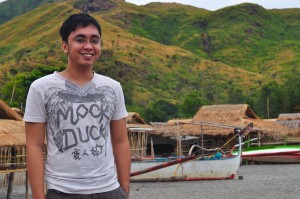Most Filipinos consider the month of March as the official advent of summer in the Philippines. However, with climate change being experienced around the world nowadays, it’s hard to tell whether or not we are going to enjoy the same season as we did in the past.
Adept weather forecasters said that we will experience “wet summer” this year due to climate change. It is a major spoiler for most who look ahead of sunny season since it is the perfect time in the year to tour beaches, hop from one island to another and visit summer destinations around the country.
Aside from being tagged as the “love month,” February is deemed as the country’s period where we get to experience relatively cold weather. Just when everybody feels like it’s the best time to visit high places, I pushed the green button for early summer and headed straight to my province— Zambales.
Pundaquit beach is located in San Antonio, Zambales—second town from my hometown (Castillejos) and fourth town from Olongapo. Pundaquit is one of the barangays in San Antonio. In Zambales, when you say Pundaquit, most locals refer to it as beach. Maybe because of the fact that the barangay resides in a coastal area. So when people say “let’s go to Pundaquit,” it’s tantamount to saying “let’s go to the beach.” This is not the most accessible coast from Castillejos since it would take 25 to 40-minute drive to reach it depending on the mode of transportation. Even if various resorts in Subic entail only 15 minutes of travel, still, I prefer to go to Pundaquit because resorts in Subic are prone to commercialization. Thus, it also affects the condition of its beaches, unlike in Pundaquit where most resorts are like residential areas occupied by nipa huts. Somehow, it gives one a feeling of tranquility and isolation.
For someone like me who can simply appreciate the abundance of nature, it will always be a pleasure to see beaches deluge with mountains and trees. Pundaquit doesn’t offer white sand and turquoise-like water, but it proffers natural glow which makes you feel away from pollution and draggy vibe of the city.
How could you not be amazed on a scene where sea waves directly hit the rocky mountain’s foot before it reaches the shore? How could you not be mesmerized to the perfect view of sunset?
Pundaquit also serves as terminal point of the tourists hankering to see Anawangin Cove, Nagsasa Cove and Capones Island. From Pundaquit, it takes 30 minutes to reach Anawangin, more than an hour to Nagsasa, and 25 minutes to Capones.
With fine and greyish sand, the sea water is abruptly deep few meters from the shoreline. Resort owners describe it as “biglang lalim” and warn visitors who do not know how to swim not to go farther to avoid any undesirable incidents. It’s not like any other beaches where even if you’re already 10 meters away from the shore, water level remains chest-deep.
This is absolutely a perfect beach for swimmers and surfers who look for added adventure during their stay. The primary source of income of people living around the area is fishing. So expect that while you’re swimming, fisherfolks flock in the area taking advantage of the vast sea to catch fish. This scene is very visible in the wee hours of the morning. It somehow benefits picnic goers craving for fresh fish since fisherfolks sell it at very reasonable prices.
If you are getting rid of sunburn, February is a good month to visit Pundaquit due to the not-so-humid weather. Plus, mountains surrounding the barangay appear on its magnificent shape. I visited Pundaquit last weekend and recorded it as my fifth. I tagged my cousins along to spend breakfast with me at the beach. Just twenty minutes after we left our home, heavy rains started to pour. And five minutes upon our arrival, the sun said hello.
We stayed at Sunset View Beach Resort, my uncle’s resort (he’s my dad’s relative). The resort has several cottages made up of Kawayan. There are two big rooms for visitors who want to stay overnight, one is air-conditioned. They call it family room. Availing a free stay is one of the advantages of having a relative that owns a resort.
Pundaquit never fails to astound me whenever I have the chance to drop by. As I surely love to go back over and over, my hopes are also high that its inhabitants would preserve it as what it is at present and keep the beach untouched by modernity. I believe it is better keep that way.
—————————————————————————————–
As expression of gratitude to my uncle who always offers his humble abode and resort to us, I’m leaving here his contact details. They have big boats that can accommodate groups who plan to visit Anawangin Cove, Nagsasa Cove and Capones Island.
Contact person is Lito Pastelero. Contact numbers: (0915-535-9463 and 0920-877-5088).
Entrance fee: P50/head
HOW TO GET TO PUNDAQUIT
Using a public transport
1- Ride a bus bound to Iba, Zambales or Sta. Cruz, Zambales. There are Victory terminals in Caloocan (Monumento), Cubao, Sampaloc and Pasay.
2- Get off at San Antonio Market.
3- From there, ride or rent a tricycle to Pundaquit.
Approximate travel time is 4 hrs from Manila through public transport. But it would only take you 3-3 ½ hrs if you have a private vehicle. Of course, it varies on the time of your travel.
Date of travel: February 5, 2011




